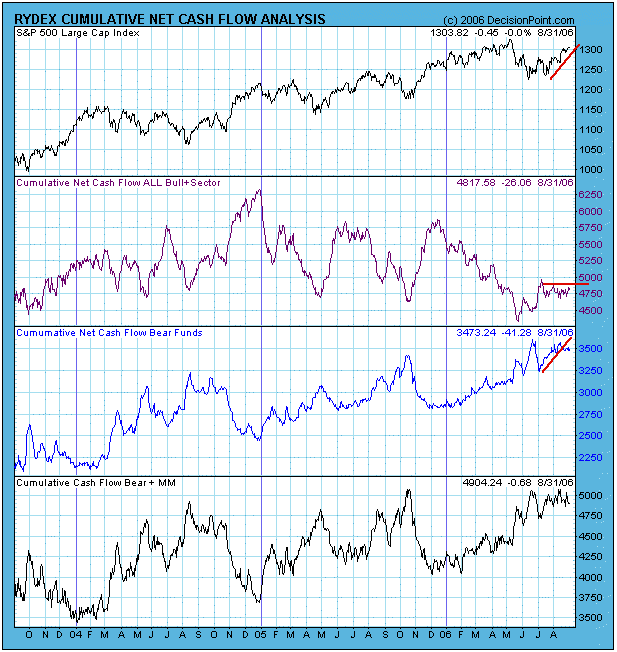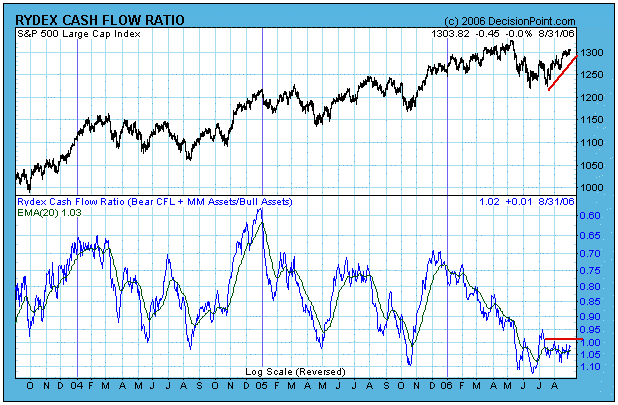After the decline that lasted from the beginning of May to mid-June, a second bottom was made in July, from which the current rally emerged. Both the bottoming process and the rally have been rough and tedious, causing a lot of anxiety among market participants, and resulting in strong, persistent bearish sentiment. This is clearly visible on our first chart of Rydex Cash Flow analysis.
The first panel below the S&P 500 chart shows cumulative cash flow (CCFL) for bull plus sector funds. Note how the indicator has been running flat for the duration of the July/August rally, a reflection of caution. On the other hand, the next panel down shows that CCFL for bear funds has been increasing for most of that period and shows that the bears are nearly as committed now as they were at the June price low.
Our next chart is of the Rydex Cash Flow Ratio*, which summarizes the elements of the first chart into a single indicator. Again, we see that the Ratio has stayed near the bearish extremes of the three-year range, even as prices approach new highs. This brings to mind the psychological term "cognitive dissonance", which is the pain we experience when our belief is in conflict with reality. Surely the bears must be feeling some pain.
Bottom Line: If the rally had been stronger and smoother, it would probably been sufficient to shake out the bears and attract the bulls, shifting sentiment to the bullish side of the range. As it is, I think we must assume that prices will move higher until sentiment turns more bullish. Such an adjustment could occur within a few weeks.
Technical analysis is a windsock, not a crystal ball. Be prepared to adjust your tactics if conditions change.








